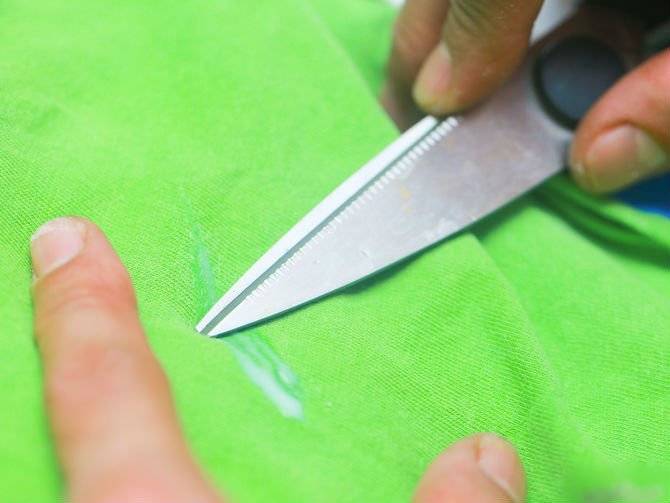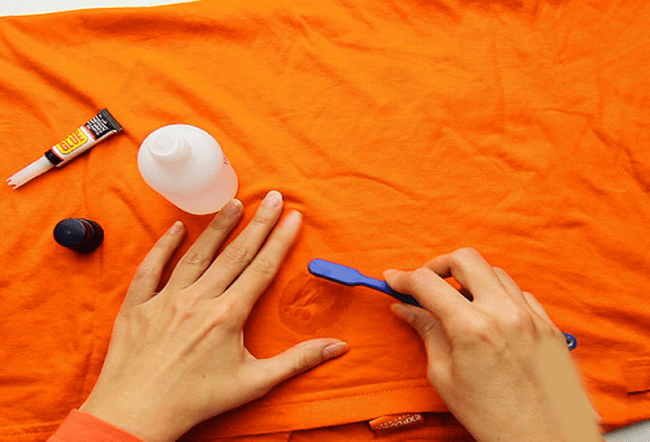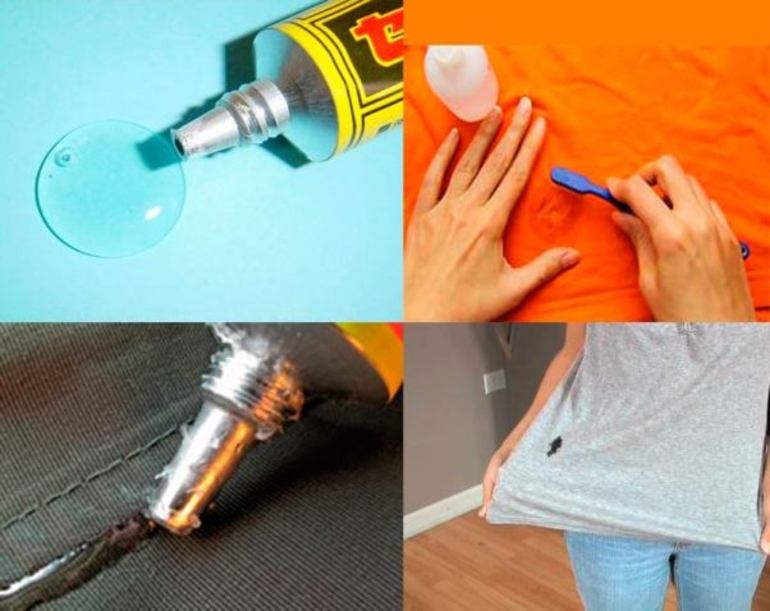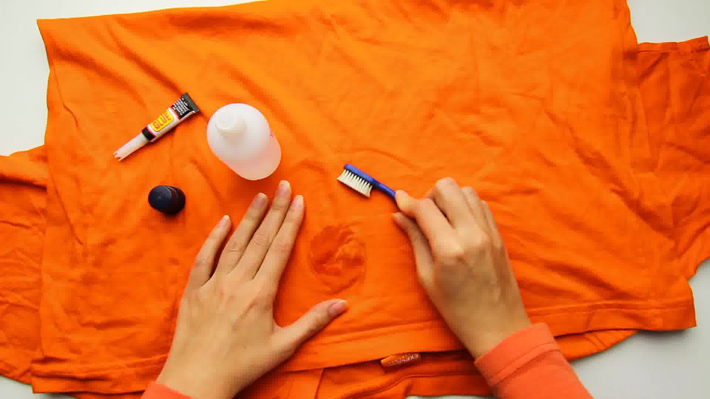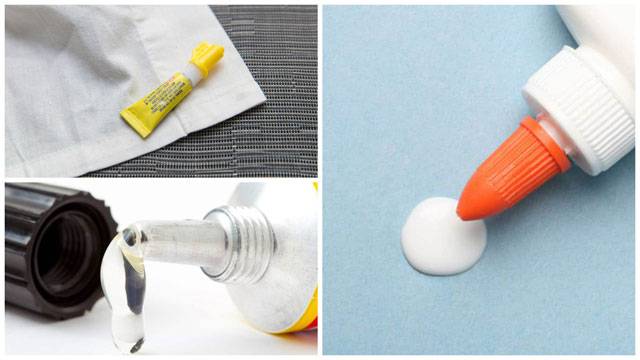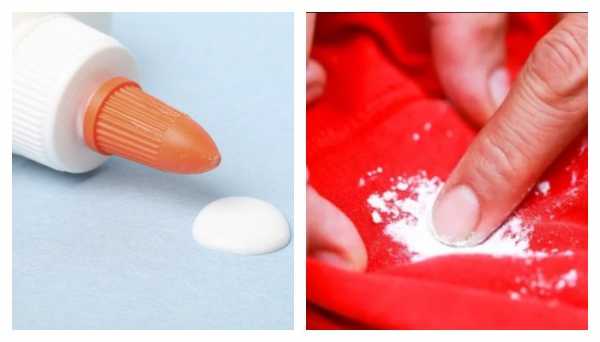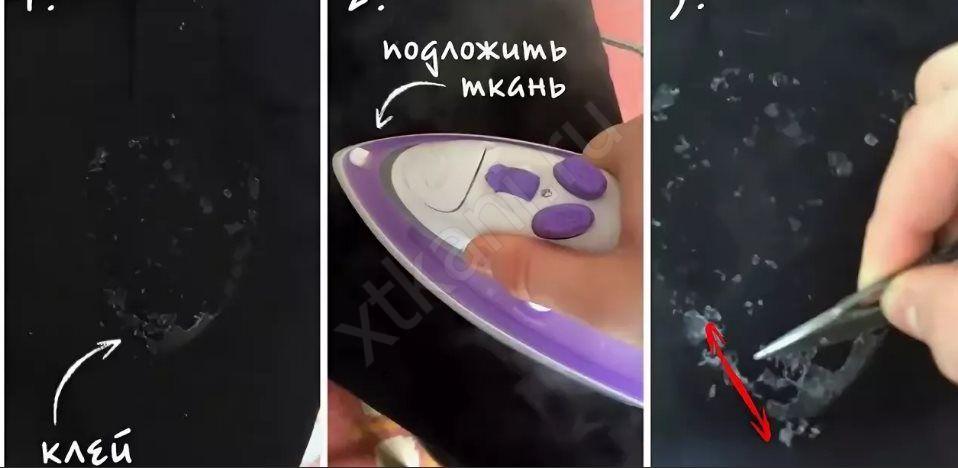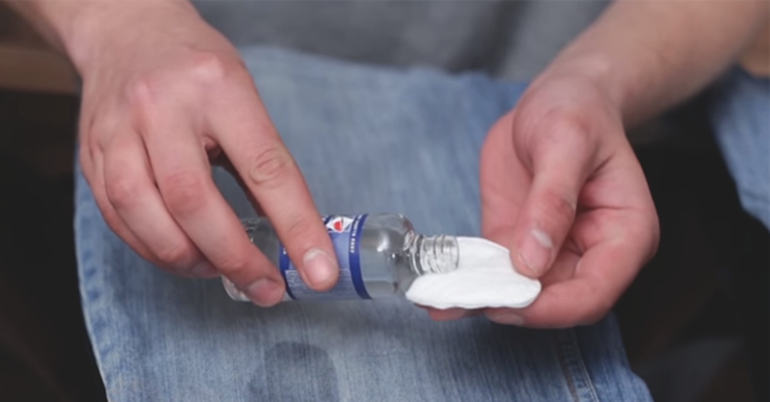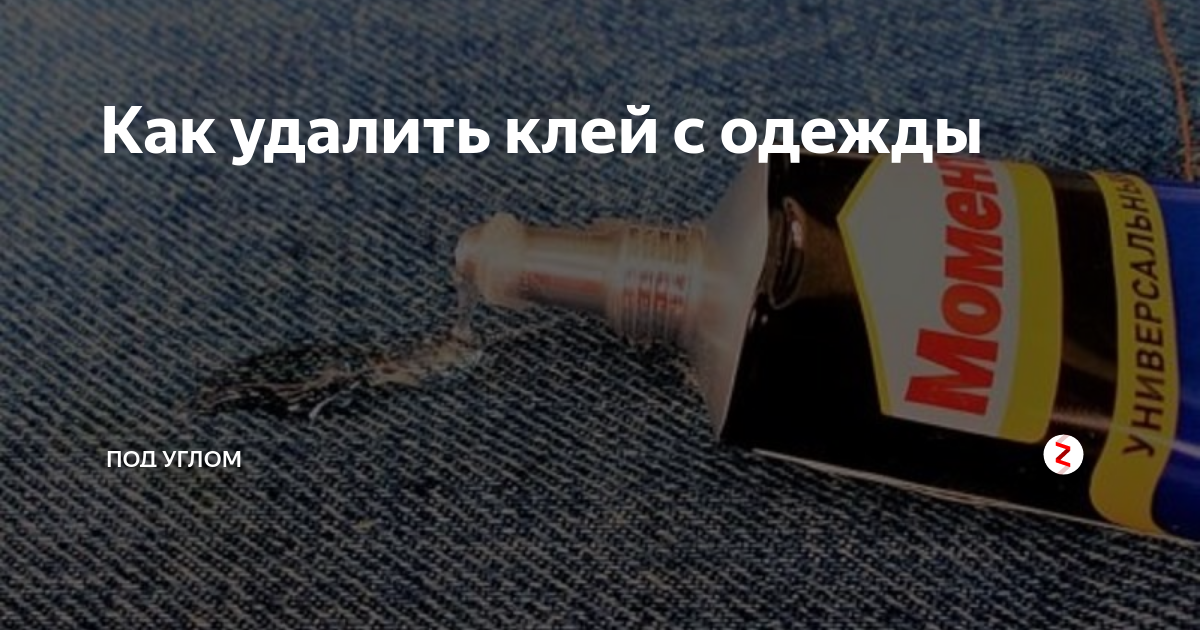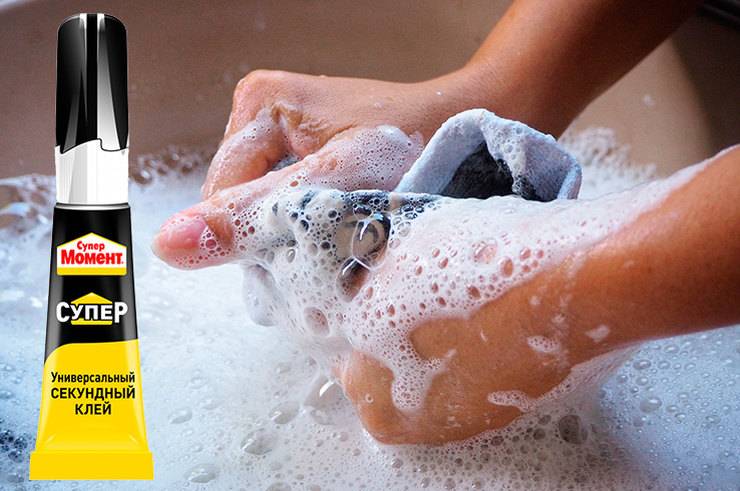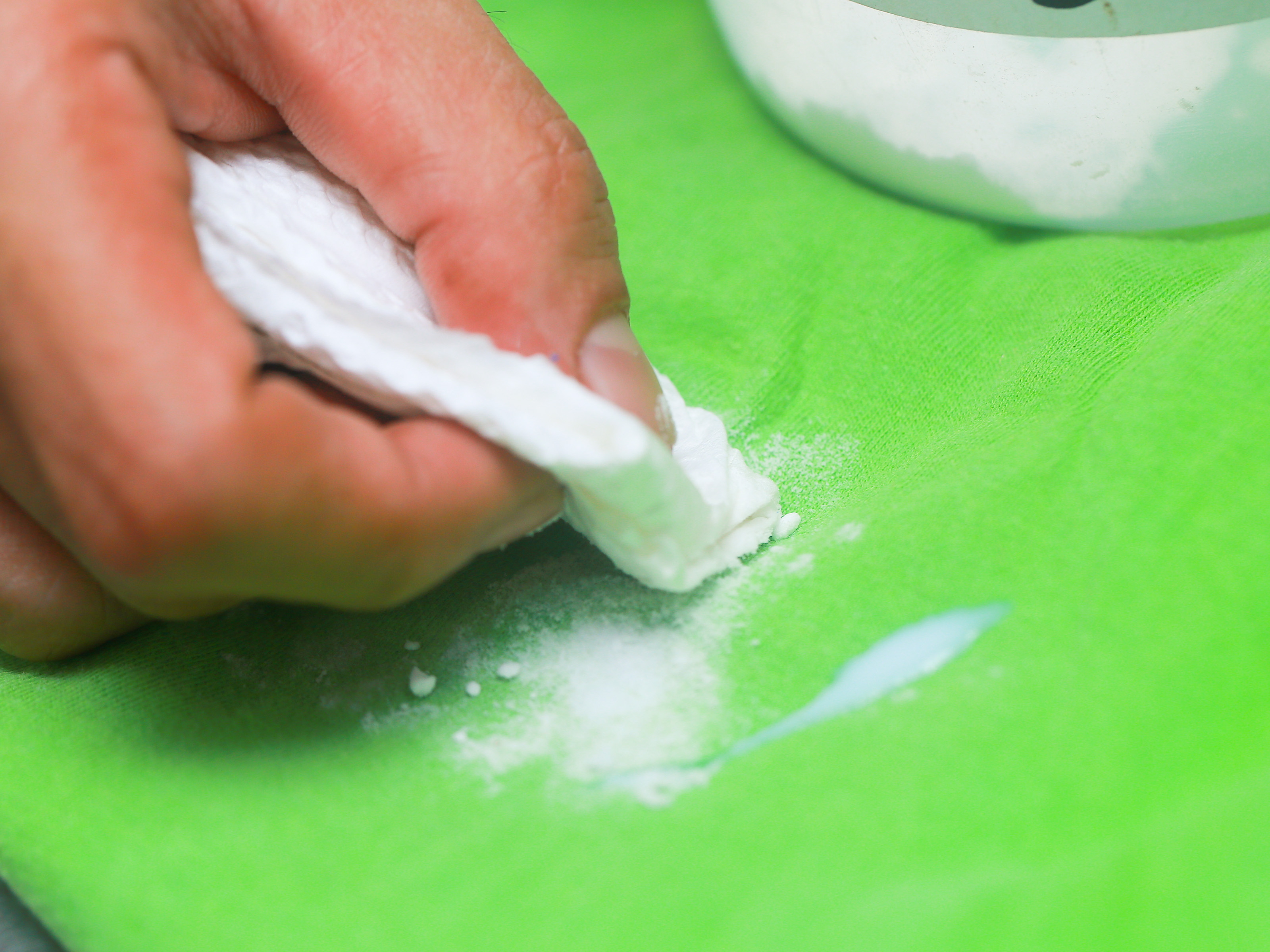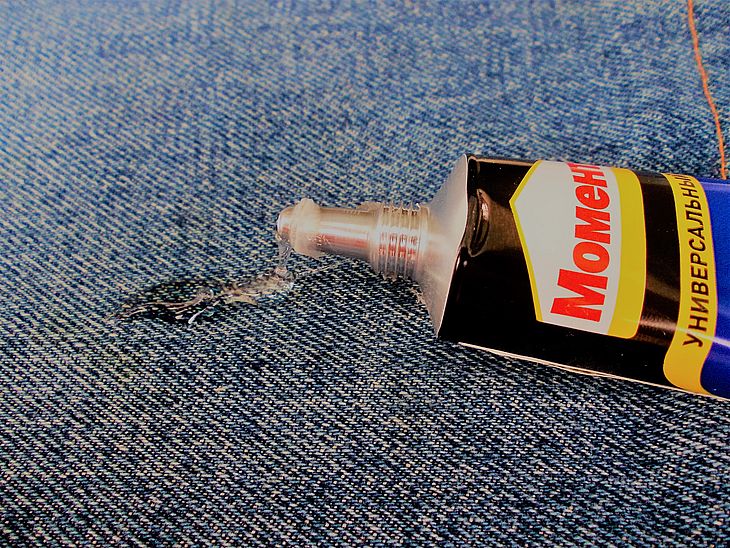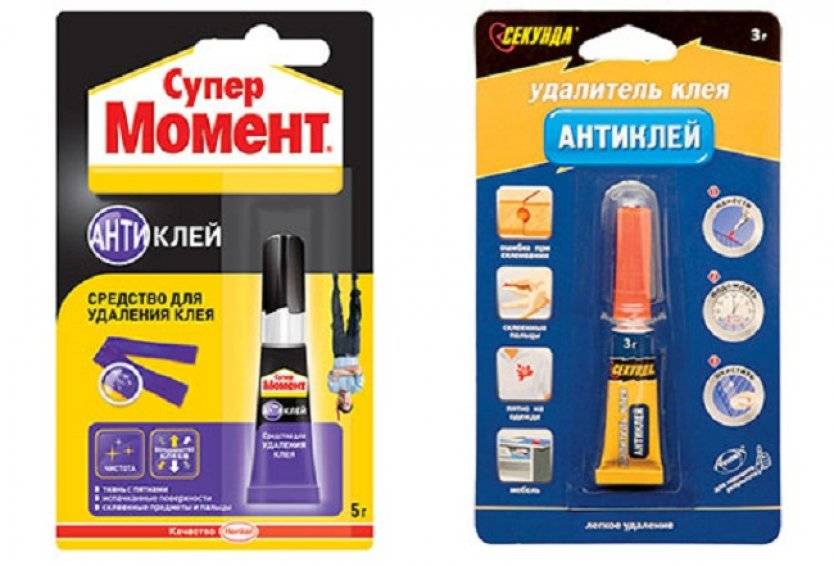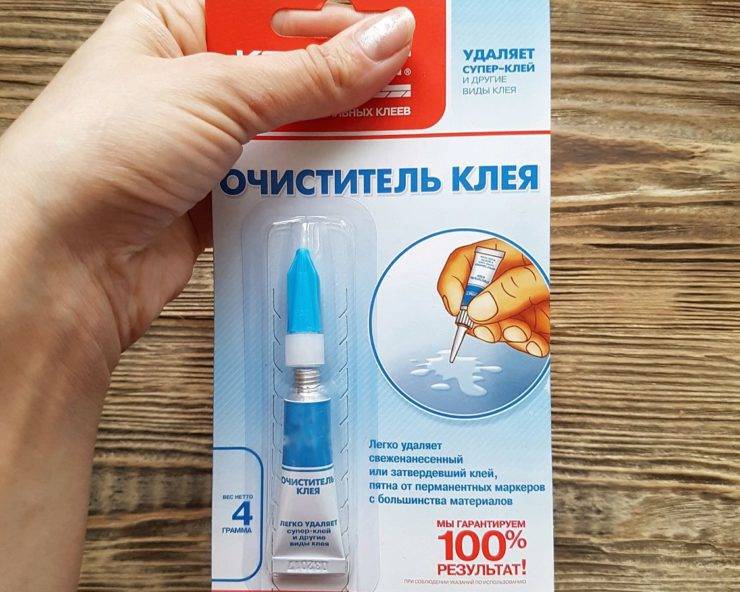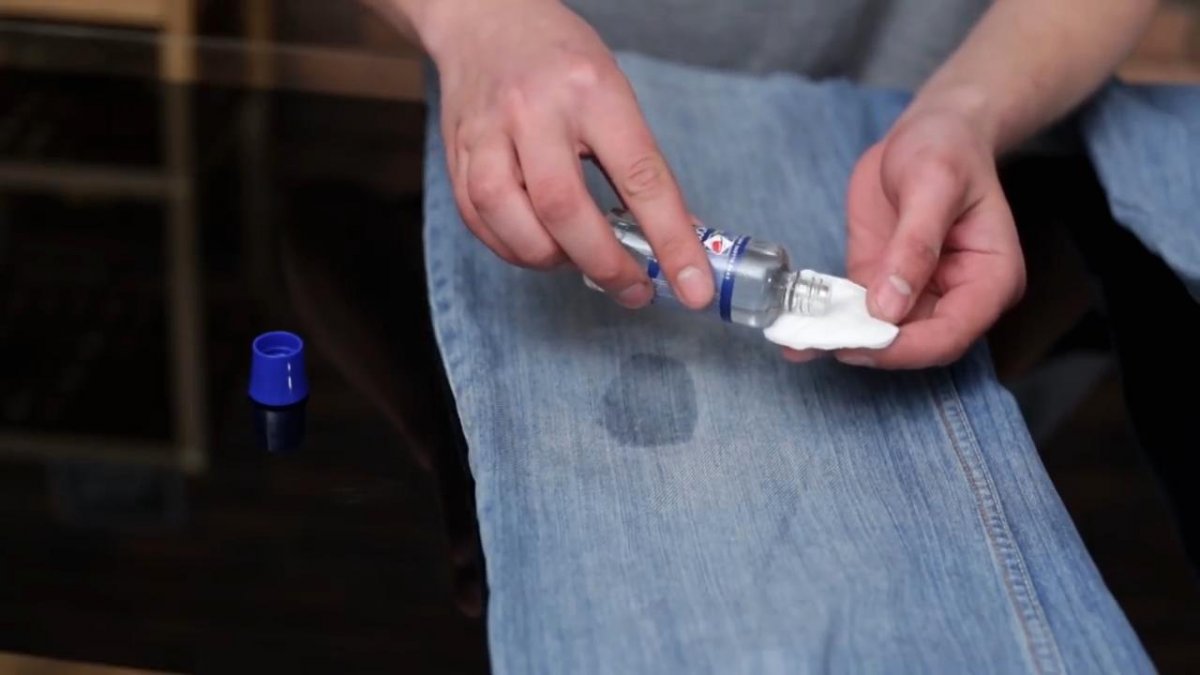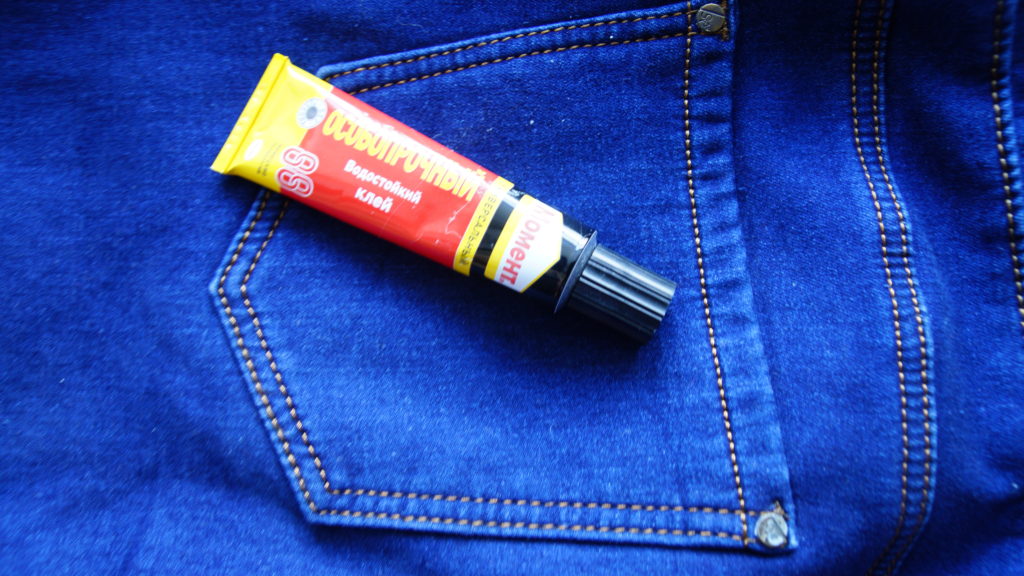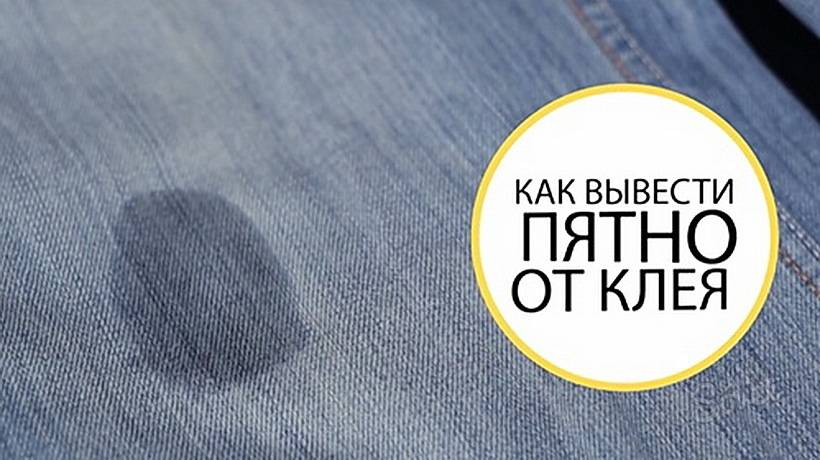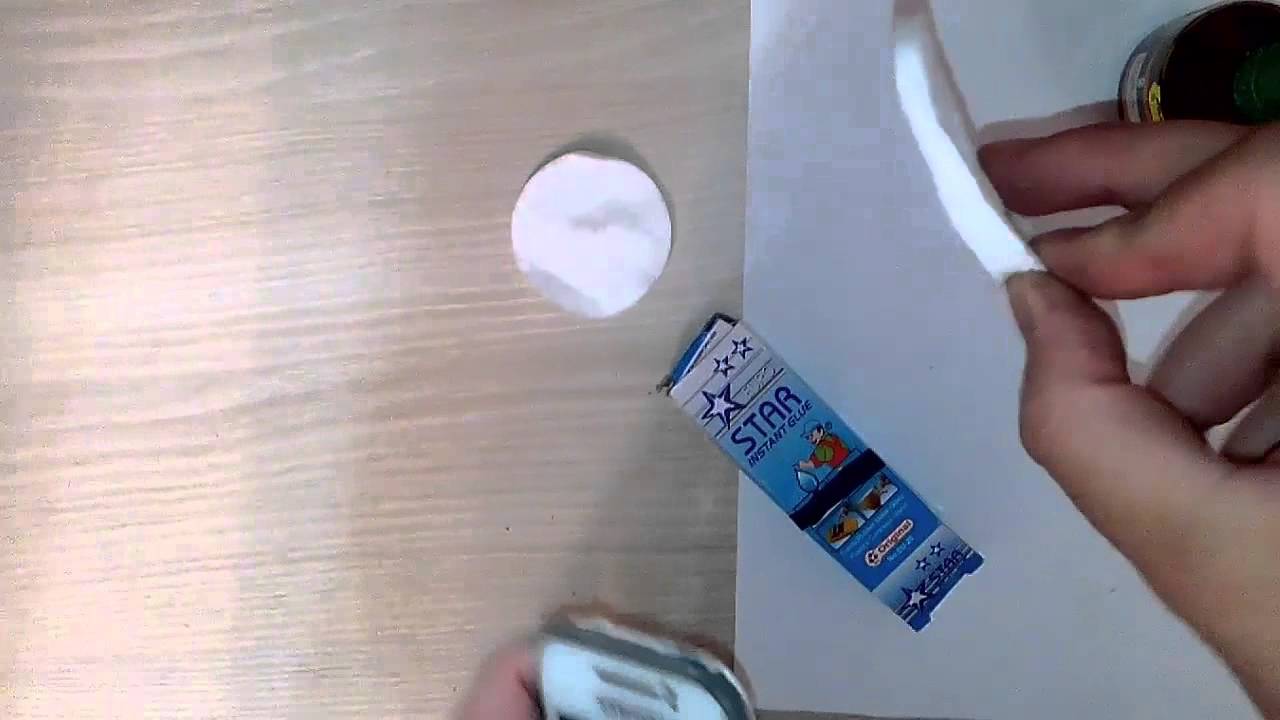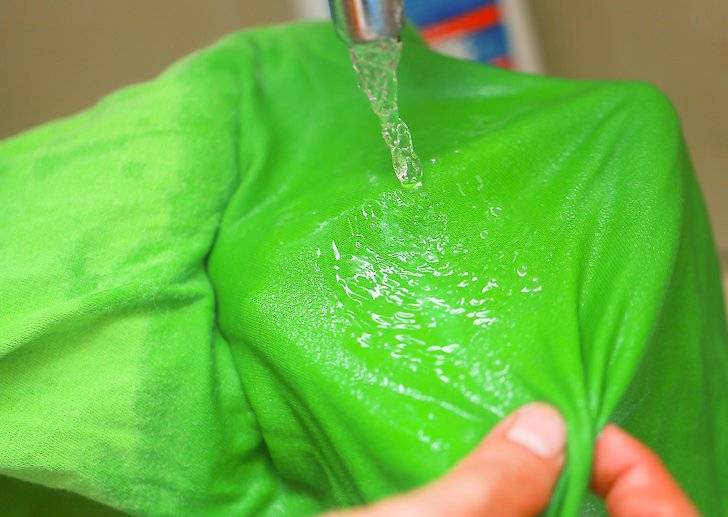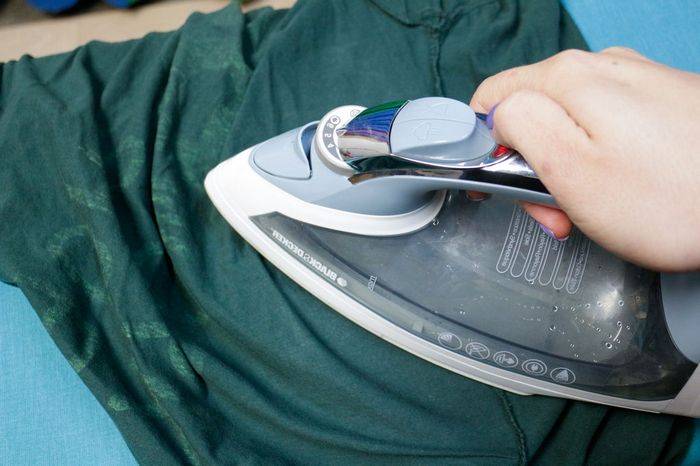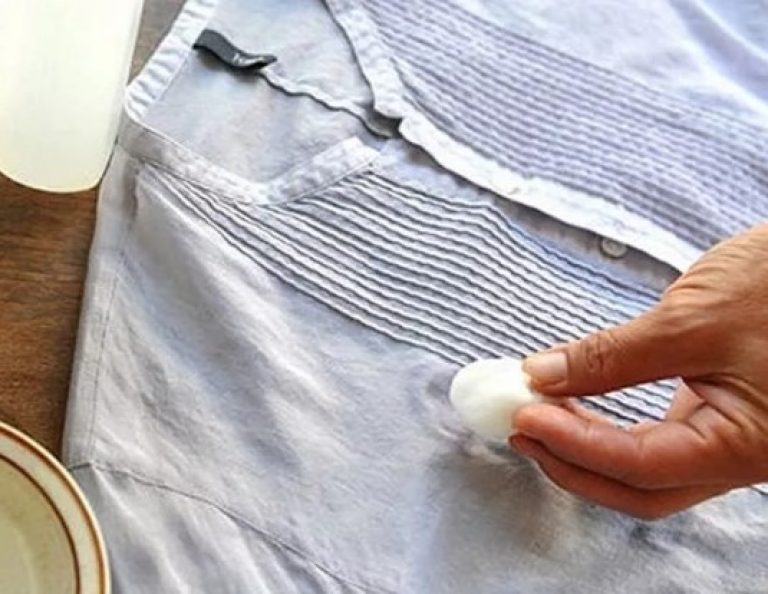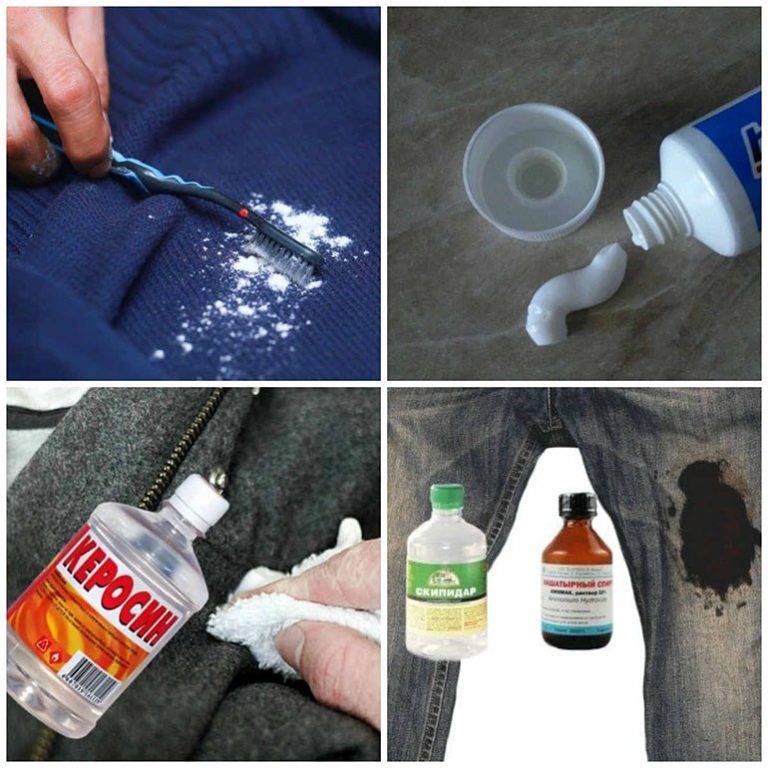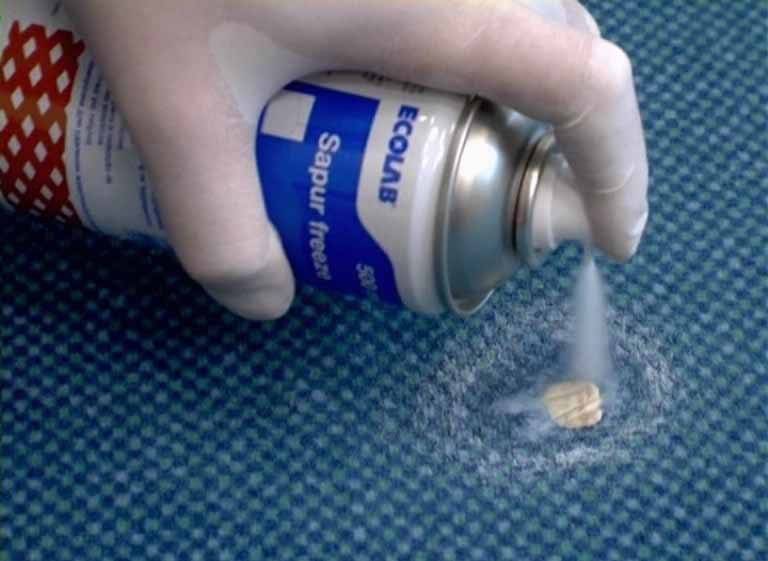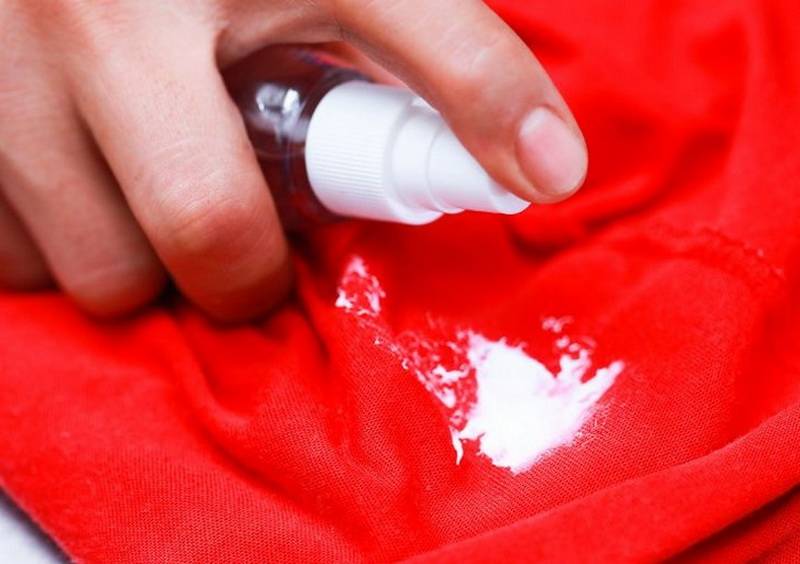Household chemicals
It is not always possible to remove super glue from clothes by exposure to cold, iron or washing in warm water. Sometimes you have to use more serious cleaning agents, namely household chemicals. With its help, even Moment glue soaked in fabric fibers can be removed. There are six effective chemicals that can be used when cleaning clothes.
White Spirit
White spirit is ideal for cleaning the super-moment of synthetic fabric from glue. If you need to clean clothes made of cotton or silk, do not use such a chemical solution. It can damage the fabric.
When cleaning synthetic clothing, pour the product over the stained area and leave to soak for 5-7 minutes. Do not allow the liquid to dry on the fabric, as streaks may remain. Therefore, a few minutes after applying the composition, gently wipe the contaminated area with a brush. Remove the remaining glue with a napkin or a cloth soaked in water.
Acetone
Acetone is ideal for cleaning dense fabrics and clothing made from natural fabrics. This product is not suitable for cleaning synthetic items. The fact is that when interacting with a solvent, synthetic fibers begin to change color and melt. Therefore, when using acetone, clothes made from such fabric can deteriorate.
Place the stained clothing on a flat surface to remove any glue residue. Then soak a few cotton pads in acetone for 2-3 minutes and wipe the stain with them. After fifteen minutes, wipe off the softened glue. If it does not peel off, then repeat the procedure. Be sure to wash the thing cleaned from the adhesive so that there are no traces of acetone on it.
Dimexide
Dimexide is a versatile product that is suitable for cleaning synthetic and natural fabrics. It is quite easy to get rid of caked glue stains on clothes with this concentrated solution. To do this, take cotton pads and moisten them with Dimexide. Then apply them to the dirty surface and leave for 15 minutes. During this time, the adhesive should soak and peel off the fabric. If the glue has soaked into the clothing and dried out, repeat the procedure several times.
Anticleus
Anticlee is a popular product that can be used to remove glue stains from any kind of fabric. To clean clothes, apply the solution to the contaminated area on both sides and leave for ten minutes. Then the adhesive should be detached from the surface of the garment and can be scraped off with a fingernail.
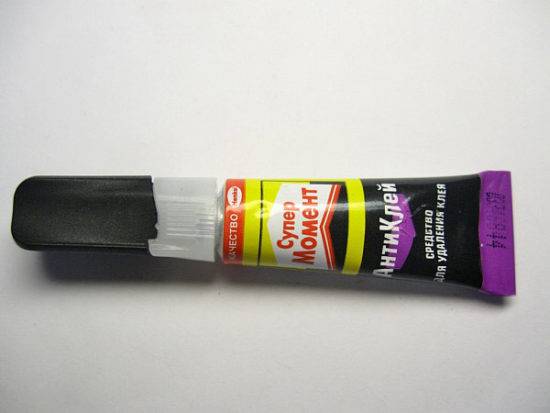 Petrol
Petrol
Gasoline will help to remove new glue spots that have recently appeared on clothing or on nubuck shoes. To do this, spread dirty things on a table or other hard surface. Then put a cloth soaked in gasoline on top of the stain. After 15-20 minutes, remove it and wipe off the soaked stain. If it is difficult to wipe off, reapply the gasoline.
After removing the super glue, wash clothes with powder and whiteness. This will help get rid of unpleasant gasoline odors and streaks.
Nail polish remover
If after using the glue for a second there are stains on the clothes, you can get rid of them remover varnish. It contains components that help to detach the adhesive from the fabric fibers.
Apply the liquid to a clean cloth or dry cloth. Then apply the product to the stain and leave it on for 10-15 minutes. The adhesive will soften and can be wiped off with a dry cloth.
Varieties
Before removing the sticker from the surface of the T-shirt, you should clarify how it is applied to the fabric.Based on this information, you can choose the best removal method that does not leave any traces of the outdated print.
> To date, the following types of drawings are distinguished:
- thermal stickers;
- thermal printing;
- screen printing;
- vinyl-based applique.
Thermal Stickers
The thermal sticker differs from other prints in the following features:
- the applied image has a solid structure through which the fabric is not visible;
- when creating a picture, a wide gamut of colors is used;
- the picture shows smooth transitions from one color to another.
If you cannot determine the label's accessory yourself, pay attention to the label. Sometimes the manufacturer indicates the type of print applied on it, making it easier for the buyer to identify.
Thermal printing
Thermal printing is applied to the fabric as follows:
- at the initial stage, the image is transferred to special paper;
- in the future, the paper is glued to the fabric using a heat press;
- as a result of exposure to high temperatures and pressure, the print adheres firmly to clothing.
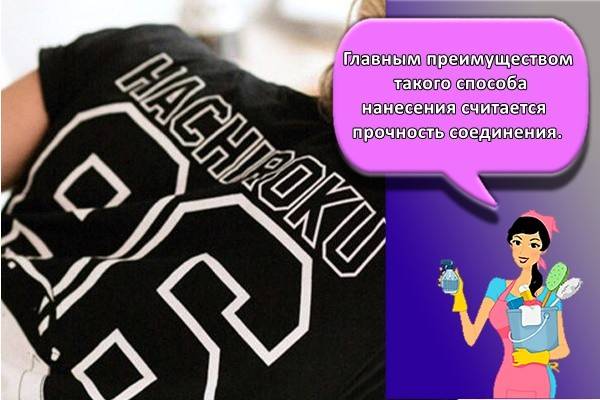
The main advantage of this method of application is considered to be the strength of the joint. Thermal printing is difficult to remove from clothing. A distinctive feature of thermal printing is the ability to determine the structure of the fabric, which clearly shows through the picture.
Screen printing
Screen printing features:
- the paint is transferred to the fabric through a special stencil, personally made for a specific pattern;
- the print is applied in stages, layer by layer;
- the paint adheres tightly to the fabric and withstands a large number of washes.
This method of applying images is used in the production of large quantities of clothing.
Vinyl-based application
Vinyl-based applique is a ready-made image that the buyer can apply to any place on his own. The application consists of:
- vinyl film;
- adhesive layer;
- image printed on vinyl.
Such images are easy to apply and remove, subject to certain conditions.
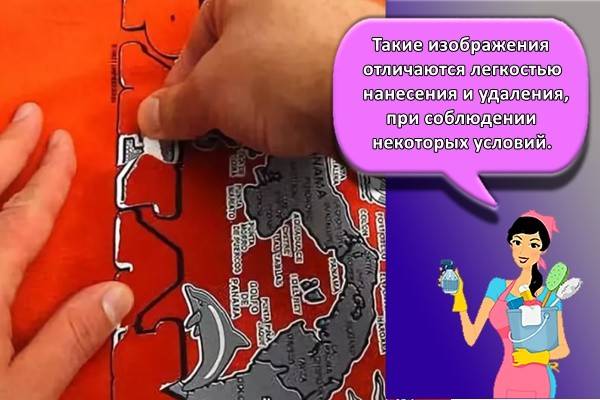
All known ways to remove PVA glue from clothes
PVA glue is undoubtedly a necessary thing in the household, but it must be handled extremely carefully. In the process of work, people, without noticing it, stain their clothes by touching the adhesive mass, which, after drying, turns into noticeable stains.
People are often interested in how to remove PVA glue from fabric, without even thinking about the fact that it can sometimes be easy. In most cases, when stains are found on their clothes, a person goes to dry cleaning, where for a lot of money they remove the pollution in the same ways that he himself can use at home.
In fact, there are a lot of options for how to remove PVA glue from clothes. For this, improvised means are used - food components or bit chemistry - they are just present in every home. Below are several time-tested solutions to the problem. Each of them is effective and safe, if, of course, you act strictly according to the instructions.
How to freeze
Since the goal is a stain from the mass, which contains water, it will be possible to remove PVA glue stains on clothes with the help of low temperatures.
To solve the problem, you need to take the contaminated item of clothing and place it in the freezer. After a couple of hours, you need to use a hammer, breaking the dried trail of the sticky mass with it. Next, the remnants of the product must be scraped off with a knife and shaken off. The last step, in order to completely remove the stains from PVA glue from clothes, must be washed in soapy water.
How to remove with vinegar
Using vinegar is an equally effective way. He, too, is a winning answer to the question: how to remove PVA glue from clothes at home? This will require a 9% solution and a regular cotton swab.After wiping the contaminated area with vinegar, traces of the adhesive mass must be eliminated - they will be removed with a single film, without residues. And immediately after that, the garment should be washed as usual.
How to remove with rubbing alcohol
Oddly enough, medical alcohol helps to remove PVA glue stains on clothes. It is suitable for getting rid of dirt from linen or cotton products. This method works almost exactly like the previous one - it is necessary to moisten a cotton pad with the composition and apply it for a couple of minutes on the stain. After the specified time, the tampon should be removed (the glue should remain on it). So, clothes from PVA glue can be cleaned in just less than 5 minutes.
With citric acid
If a woolen sweater or any other warm thing has been contaminated, PVA glue can be removed from the fabric using citric acid. Here you need to prepare 100 ml of plain water and 20 g of "lemon". These components should be combined and mixed thoroughly.
How to clean PVA glue from clothes at home with citric acid solution:
- Collect the solution in a teaspoon.
- Pour evenly over the stain (you can go a little beyond it, but so that the glue mark itself is completely covered).
- Wait about half an hour.
- Wash a thing in the washing machine at an accelerated rate.
What do you need to know if you get dirty with glue?
If a situation has turned out that the adhesive got on the clothes, then you should not panic and throw away your favorite thing. It is recommended to calm down and act according to the following plan:
The first step is to remove the glue remnants from the clothes with the utmost accuracy with a clean napkin, but so as not to stain or smudge the glue speck even more.
After that, using a regular knife, it is recommended to remove the remnants of the glue from the surface of the clothing.
Then we define the type of fabric texture and glue.
It is important to remember that dried and old glue stains are much more difficult to remove than fresh stains.
After a specific agent has been selected to remove the glue stain, it is important to pre-test on an inconspicuous area of the affected clothing in order to prevent irreversible damage to the tissue texture, discoloration or deformation.
In the process of removing traces of glue, it is recommended to put a thick fabric or cardboard paper under the processing cloth to prevent damage to the surface of the table or other furniture used to handle damaged clothes.
At the end of removing the unfortunate stain, it is recommended to wash the treated wardrobe item in the usual way.
Ways to wash stains
Practice shows that it is easiest to remove PVA glue. If the composition gets on the material, it is necessary to soak the thing in warm water as soon as possible, and then treat the contaminated area with any washing powder. The next popular method for removing glue spots involves the use of denatured alcohol. A small piece of cotton wool or cloth is moistened in the solution, then the stain is carefully treated with it. You can substitute vinegar for alcohol. The thing is left for half an hour to soak the contaminated area. Next, the product is soaked in a bowl of warm water and the garment is washed completely.
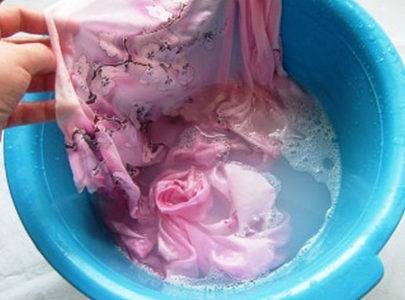
We recommend that you familiarize yourself
If there are traces of silicate glue on the product, then you need to act as quickly as possible. Experienced housewives soak a wardrobe item in warm water and leave it in this state for 2-3 hours. After this time, the fabric is washed with laundry soap. For effective cleaning, use a sponge or brush of moderate hardness so as not to damage the material of the product. The procedure is completed by cleaning the cloth with powder. Washing powder is poured strictly into warm water, otherwise it will not be possible to achieve the desired result.
Helping chemical solutions
Unfortunately, not all super glue stains can be removed with a regular knife or hot iron. Some stains are so "tenacious" that you have to resort to chemical solutions and liquids. How to remove super-glue from clothes with chemical solutions and liquids?
1Acetone versus glue. To remove traces of super glue with acetone, you will need the product itself, a cotton pad, warm water. Spread the thing soiled with glue on a flat surface and lay a sheet of cardboard or strong paper under it. Two cotton pads must be well soaked in a clean acetone solution and applied tightly to the material from below and from above. Soak for 5-7 minutes, then you can try to scrape off the remnants from the fabric
Carefully! Colored items can fade from acetone solution.
2White spirit in the fight against superglue stains. How to remove traces of glue with white spirit? To do this, the thing can be well moistened with white spirit in the place where the superglue has spilled, and left for a few minutes.
It is important not to allow the solution to dry on things, as white spirit evaporates quickly
It is necessary to periodically moisten the stained area with liquid
After that, you can try to scrape off the glue from the fabric with a handy object. A more gentle way to remove glue stains is to apply a cloth or cotton pad soaked in white spirit to the dirt. White spirit cannot be used for such delicate fabrics as pure silk and cotton!
3 At home, stains can be removed with vinegar. To do this, you need a glass of vinegar 9% and 1 tbsp. l. warm water. In a convenient container, dilute the vinegar with water. The surface at the place of contamination must be soaked in the prepared solution for 10-15 minutes, and after that you can try to remove the superglue stain by scraping it off the fabric or removing it with tweezers. This method of removing stains is not suitable for synthetic items, because it can deform the fabric where it is stained with glue.
4How to remove traces of super glue with gasoline? To do this, you need two rags, which must be thoroughly moistened with gasoline. It is necessary to spread clothes on a table or any flat surface and attach rags soaked in gasoline on both sides: top and bottom. After 10 minutes, the superglue can be removed from your clothing with a comfortable item. Clothes should be washed well with powder to get rid of the pungent smell of gasoline and possible stains that remain on the surface after superglue and gasoline.
5Solution of Dimexide pharmacy against superglue stains is an excellent remedy. How to remove a super glue stain from clothes with Dimexidum? To do this, you will need a solution of pharmacy Dimexide, which must be abundantly moistened with cotton pads. The moistened discs should be applied to the place of contamination on clothing for 10 minutes. After that, you can try to remove the remnants of the adhesive. If it is difficult to remove, the procedure can be repeated several more times until the glue is completely removed from the clothing. After the procedure, the clothes should be washed with powder in warm water.
For options with coarse fibers, such as wool, linen, denim, terry, exposure to low or high temperatures will be sufficient to remove the adhesive. But with thin fibers, colored and synthetic fabrics must be handled very carefully, because liquids such as gasoline, vinegar and thinner can damage the fibers, and the thing will be damaged not even from a stain, but from improper handling of hazardous compounds. By following the instructions above and observing the rules for working with substances, you can easily remove the stain, restore the previous appearance of the item and continue to wear it.
Other methods of removing contaminants
In the question of how to remove glue from clothes, you can resort to more radical methods of influencing the damaged thing. Among them are:
- the use of acetone;
- exposure to extreme temperatures;
- ironing;
- the use of gasoline;
- cleaning with vinegar.
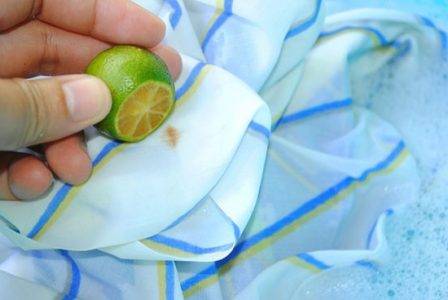
Removing traces of glue with acetone cannot be used on colored and delicate fabrics, since the risk of damage to the item is too high. This technology is not suitable for processing products made of synthetic materials. In other cases, housewives often resort to the technology of processing a product spoiled with glue using acetone. An ordinary cotton swab is dipped into the product, and when it is saturated with acetone, the area of the material spoiled with glue is treated. Soak the stain well with acetone, after which you can start washing and rinsing the product.
If you decide to clean the glue from the clothes using the cold, then keep in mind one feature of the reception. It has the right to life only if the glue mass is slightly smeared over the surface. At the same time, the composition should be applied in a sufficiently thick layer or take the form of a thick drop. The processing technology will be similar to the method of cleaning the material from dried chewing gum. Housewives pack the item in a plastic bag and put it in the freezer for a while. In the cold season, a balcony is quite suitable for these purposes. You can proceed to active actions as soon as the spoiled thing freezes and hardens well. Try to carefully remove the dried glue with a needle or a knife with a narrow blade.
You can also get rid of the glue on the fabric by exposing the material to high temperatures. First, you will have to arrange the stained item with an intensive wash and ensure that it dries completely. Next, you need to turn on the iron and set it to the highest possible temperature. At this stage, do not forget to take into account the material of the product so as not to deform the thing irrevocably. When the tool is prepared, the area with traces of glue is ironed on both sides.

Temperature cleaning
An unexpected assistant for removing traces of superglue is the refrigerator. Using low temperatures, it is easy to clean large caked drops or thick spots. The method is simple: the soiled clothes are carefully folded into a plastic bag so that the stain does not touch other layers of the fabric, put in the freezer for an hour and a half.
The method is based on freezing and separating tissue fibers from each other, while superglue is actively crystallizing.
To clean the surface from traces of adhesive, it is enough to crush the drops with a hammer or carefully scrape off with a knife, metal tweezers. To completely remove the remaining microscopic particles from the material, it is recommended to soak clothes for a short time in a warm solution of soap or washing powder.
In order to completely remove the remaining microscopic particles from the material, it is recommended to soak clothes for a short time in a warm solution of soap or washing powder.
Exposing the superglue consistency to high temperatures is equally effective in removing old traces of the chemical. The method is widely used to clean dense, smooth, lint-free fabrics - jeans, jackets, coats. It will take a hot one iron and paper napkinsto be applied to the stain on both sides. The stained area of clothing is ironed with an iron, napkins with residues are quickly removed, then the thing is washed with soap and warm water.
1 Glue "Moment"
Persistent traces always remain from this type. Cleaning methods will primarily depend on the type of material. If the garment is made of durable multi-layered fabric, you can remove the resulting stain with gasoline or acetone. You need to moisten a cloth with one of the specified means, blot the stain. Leave the thing for half an hour, then wash it in the usual way.
If things are made of delicate materials (lace, silk, wool, velvet, chiffon, etc.), they need a special approach. It is allowed to process such fabrics with a solution of 1 glass of purified water and 25 g of lemon (citric acid).The mixture is abundantly blotted on the stain, after which the product is washed with ordinary powder.
Various types of glue are also produced under the name "Moment". If the stain remains after using the "Super Ideal" option, then a special product from the same brand called "Antiklei" will help to quickly remove it. The shoe repair type is easiest to remove with a nail file. And wallpaper - with laundry soap.
How to remove glue
Since different types have different chemical composition from each other, the means for cleaning them also need to be varied. Let's take a closer look:
Super glue is one of the most effective, but also the most difficult to remove. Acetone is considered a common remover (including cosmetic materials for nail polish remover)
Important: you should let the super-glue dry thoroughly and only then start cleaning. It is necessary to wet the glue spot abundantly with acetone and leave for at least 1 hour.
After soaking, wipe the contaminated area with a hard sponge or brush (a toothbrush is also suitable), and then rinse with water. If after 1 time the stain has not gone away, repeat the procedure until the desired result. In the absence of results from the use of acetone, it is recommended to use the drug Dimexide (dimethyl sulfoxide), which is sold in the pharmacy without a prescription.
Glue The moment cannot be called a second, but it grasps quickly enough. Therefore, the main condition for the qualitative disposal of its traces is speed. If you do not have a special Antiklay (sold in hardware stores) at hand, you should try gasoline or acetone, which successfully dissolve the components of the glue. Moisten a sponge and wipe the dirty area thoroughly
You can use White Spirit, but this liquid is aggressive, so you need to use it carefully. For example, do not clean the surface of a pine table or chiffon dresses with White Spirit.
PVA is removed with vinegar or alcohol
First, you need to thoroughly wipe the dirty place with a brush dipped in one of the liquids, and then immerse it in a soap solution for several hours (it is better to take household soap). Machine wash as usual.
Wood glue can be effectively cleaned with acetone or nail polish remover. You need to wipe the stain with a sponge until until it disappear.
Stationery can be easily removed in a simple way - washing with water will help. It is important to do this before the adhesive is completely dry. If the area of contamination is extensive, for example, glue has spilled, you need to collect it with a rag, and then rinse this place with water until it is clean.
Textile glue is used for gluing rhinestones and appliqués. To clean things from its traces, it is recommended to use acetone, gasoline, white spirit. It is worth connecting professional tools, since this material is complex in composition and may not lend itself to home dry cleaning.
Hot is often used in a heat gun, so it is not surprising to get dirty. Mostly trousers and jeans are affected. Remove it using temperature exposure. Freezing in the freezer for 5-6 hours is considered the best, and after the thing is thoroughly frozen, just crush the drops with your hands or a hammer.
Do you machine wash your shoes?
Oh yes no
Wallpaper glue can be cleaned well with water and laundry soap. The thing is lathered and kept for 5-6 hours, then washed.
Rubber glue is made on the basis of natural rubber. To get rid of stains, it is recommended to clean the area with the following solution: 10 g of soda ash, 1 tbsp. l. 95% alcohol, 3 tbsp. l. water. The mixture is carefully treated with contamination, and subsequently washed.
Silicone glue is the most durable, therefore experts advise to get rid of it mechanically (scrape off with a scraper or cut off). Silicone lends itself well to 70% vinegar and 96% alcohol. Pour one of these liquids over the stain, wait for the sealant to soften and wipe off with a sharp object.
Silicate is removed by immersing the thing for 3-4 hours in such a solution: for 1 liter of water, take 2 tbsp. l. soda and any detergent. Then the clothes are washed.
Shoe glue is removed, depending on its composition, either with gasoline or white spirit or acetone. In some cases, it is enough to wipe the contaminated area with 5% ammonia.
10 How to deal with dried stains?
If the stain is more than one month old and the glue is very dry, the following methods will help to remove it:
- 1. High temperature. To remove, take two pieces of unnecessary white cotton cloth. They are laid on both sides of the fabric in the spot area, after which they are well ironed with an iron heated to maximum. The dirt will be transferred to the scraps of fabric.
- 2. Hammer. If the stain is very large, you can knock on it with a heavy object. As a result, the pollution will disintegrate into small particles that can be removed. All that remains is to wash the thing in hot water.
- 3. Knife. This option is suitable for very dense fabrics. For example, for denim. The stain is cleaned off with a blunt knife, after which the item is erased. Remaining glue will disappear after 2-3 washes.
If none of the above methods helps, then it is better to purchase special products in the store, such as "Anti-Superglue", "Glue Remover" and others.
Means and methods for removing glue from clothes
Based on the components in the glue, various substances are used to remove it:
- solvents, including white spirit;
- gasoline, acetone;
- "Antikley";
- nail polish remover (no acetone);
- dimexide;
- ammonia;
- vinegar;
- turpentine;
- alcohol.
Solvents, gasoline, acetone remove silicone and acrylic adhesives, Dimexide - Superglue, turpentine - epoxy, regular wash - PVA.
It is necessary to adhere to certain rules, carrying out the removal of glue by any means:
- get acquainted with the information on the composition of the fabric, on the methods of caring for it, placed on the label;
- try to determine with what glue the rhinestones are glued in order to choose the right tool;
- conduct a test on an inconspicuous area of tissue;
- use gloves;
- in case of contact with eyes or skin, rinse immediately with plenty of water;
- animals and children should not be around;
- ventilate the room well;
- put a towel, napkin under the fabric, changing them when wet;
- the glue should be soaked, not rubbed over the surface of the fabric;
- when ironing a product, a napkin or paper towel is applied from the seamy side and front side to absorb the remnants of the product.
Heating method
Procedure:
- Put white paper on the glue spot on the front and back side, iron it, gradually changing the temperature from minimum to maximum. At high temperatures, the adhesive penetrates through the fabric to the wrong side and is absorbed into the paper.
- Soften the glue with an iron, soldering iron and quickly remove it with an eraser, sponge, napkin.
Gentle ways to remove glue
Some fabrics should not be exposed to chemicals - they fade, discolor, the substance eats up the base of the fabric, so it is possible to use gentle methods based on the hardening of the glue - it becomes brittle.
Freezing method:
- place the product in a bag and put it in the freezer (-24 °) for 6-8 hours, break the frozen glue by knocking on it with a wooden mallet, spoon, brush it off;
- if the glue is not frozen at this temperature, treat it with a freezing aerosol (cools the surface down to -40 °);
- the procedure is repeated until the result is achieved.
Washing:
on a white fabric, the glue will disappear when washing in a machine (on hands) with powder and soda (select a long program).
Over steam: a non-dried trail from PVA can be easily washed off with laundry soap, and dried glue must be warmed up over steam and wiped with an absorbent cloth.
Using alcohol: wipe dried glue on jeans, linen, cotton with a sponge dipped in alcohol and wash the product.
The use of Dimexidum is possible for any product: soak pieces of cotton wool in the product and put on the stain and under it for 10-15 minutes, then remove the softened glue with a napkin from the fabric.
Use of solvents
On natural fabrics, glue can be easily removed with solvents, and acids and liquids with chlorine are not suitable for these purposes - acid corrodes fabric, chlorine discolors dyes.
How to use solvents, ammonia, vinegar:
- Wash the product in an alkaline solution - hot water with alkali will dissolve the glue. This method is suitable for water-based adhesives and large areas of contamination.
- To remove acrylic and silicone glue, acetone is suitable: soak the area of the product with the glue stain in it for several hours, then wipe it off with a cloth.
- The epoxy resin will help to remove the turpentine: apply the substance to the glue from the front and back sides, wait and wipe with a napkin.
- Oily and whitish stains remaining after processing, wipe with medical alcohol and wash the product.
- Wet cotton wool with nail polish remover or acetone and put on the trail from the front and from the wrong side, hold for a while, remove the softened glue mass.
- Apply ammonia to the stain and let stand for 10-20 minutes, then wipe the soft mass with a napkin.
- Dissolve a tablespoon of vinegar in a glass of water (40 ° -50 °), apply on the glue line or soak the soiled part of the product in the solution, let it stand for about 50 minutes, wash the item.
In the case when none of the methods helped, you will have to use modern preparations for removing adhesive stains from hands, clothes, furniture, which are sold in hardware stores. Silicon dioxide and propylene carbonate in their composition remove even old dried glue well.
Methods for stubborn glue stains
The longer the glue stays on the garment, the harder it is to remove. There are several methods that can help with severely dried soil.
- Blade of knife. The knife can only be used on dense fabrics, otherwise there is a risk of damage to the product. Scrape off the top layer of glue with a blade, wash the residues embedded in the fabric.
- Pieces of gauze are pinned to the stain on the clothes on both sides, and the thing is ironed with an iron at the highest temperature. The glue should remain on the gauze.
- Clothes soiled with “super glue” or silicate are kept in the freezer for an hour, then they knock on the problem area with a hammer. The stain just crumbles.
- Hardware stores sell special products for removing glue from clothes, it is likely that they will help remove old, dried drops.
These were the best ways to get the glue off your clothes. But any problem is better prevented than solved. When working with such substances, wear old clothes or use protection (apron, robe, any cape). Glue can damage not only clothes, but also skin. Some types of adhesives can cause burns, allergic reactions, and irritation.

